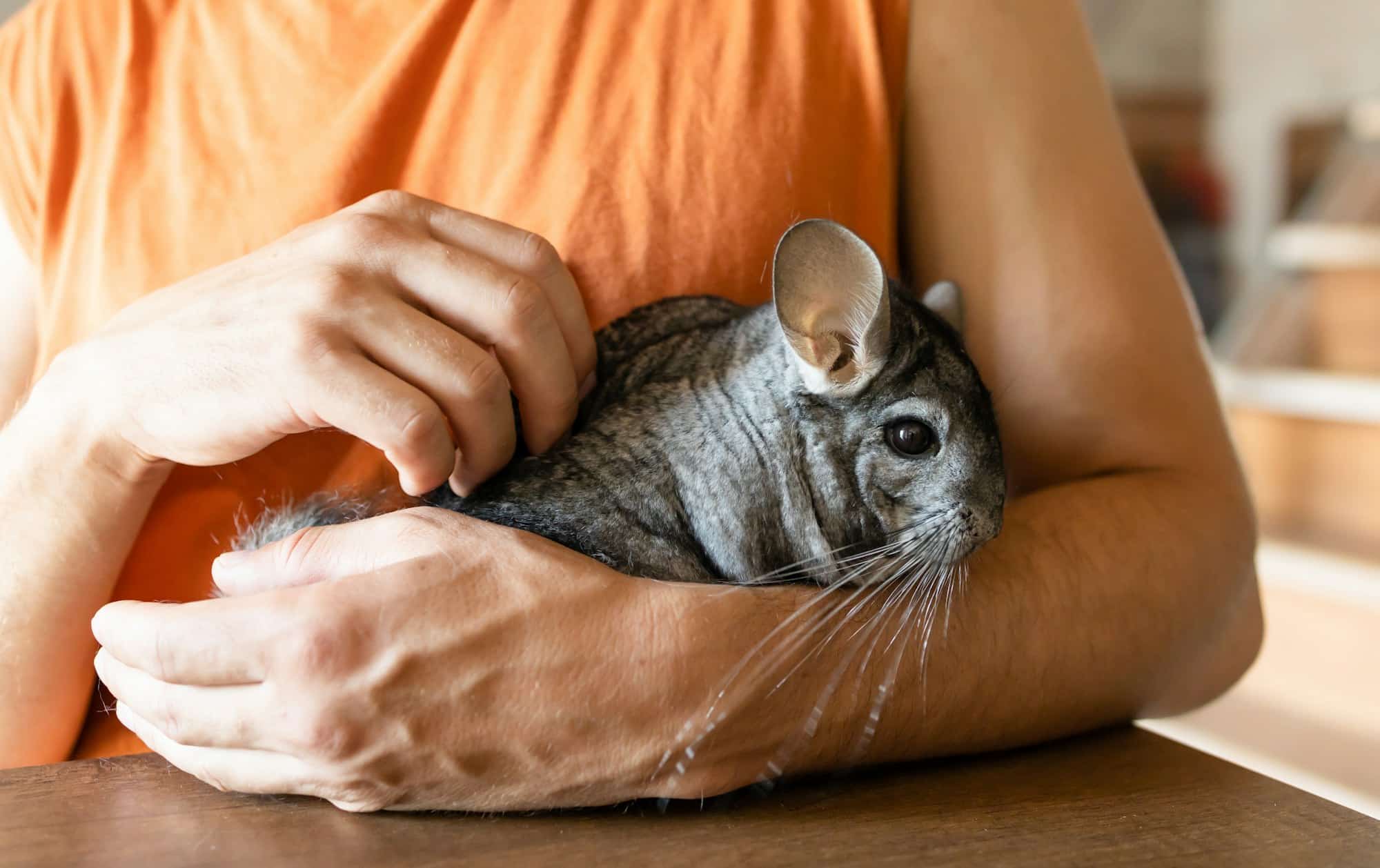What’s the Ideal Cage Setup for a Chinchilla Including Temperature and Bedding?

Chinchillas are delightful pets, known for their playful nature and luxuriously soft fur. They are also known for their particular needs when it comes to housing. If you’ve recently welcomed a chinchilla into your home or are considering doing so, it’s critical to understand how to set up their cage properly. A chinchilla’s cage setup, including the temperature and bedding, plays a crucial role in their overall health and well-being.
Choosing the Right Cage
The first step in setting up a suitable home for your chinchilla is selecting the right cage. Chinchillas are active animals that need plenty of space to move around. Although they are small rodents, they shouldn’t be kept in small cages. They need space to explore and let out their energy, so ensure to provide this.
A voir aussi : How to Train a Parrot to Step Up Without Biting?
When choosing a cage, opt for an enclosure that is at least 2 feet by 2 feet. The ideal cage should be wide and tall, allowing the chinchilla to jump and climb as needed. A multi-level cage is ideal, providing the chinchilla with different platforms to explore. The cage should also have a solid floor to prevent your chinchilla from getting its feet caught in wire flooring, which can lead to injuries.
In addition to size, the cage’s material also matters. Avoid plastic cages as chinchillas are known to chew on everything and ingesting plastic can cause serious health issues. Instead, choose a cage made of non-toxic, chew-proof material like metal.
Cela peut vous intéresser : How to Recognize the Early Signs of Hip Dysplasia in German Shepherds?
Setting the Appropriate Temperature
Chinchillas originated from the cold Andes Mountains, so they are accustomed to colder temperatures. They do not tolerate heat well and can suffer from heatstroke if their surroundings get too warm. Therefore, maintaining the right temperature in their cage is essential.
The ideal temperature for a chinchilla’s cage is between 60 to 70 degrees Fahrenheit (15-21 degrees Celsius). During the warmer months, make sure the cage is not in direct sunlight, and consider using fans or air conditioning to keep the temperature down.
It is crucial to monitor the temperature regularly and take action if it goes beyond the safe range. Remember, your chinchilla’s comfort and health are paramount here.
Selecting the Right Bedding
The type of bedding you choose for your chinchilla’s cage can significantly impact their health and comfort. Chinchillas have sensitive respiratory systems, so it’s crucial to select bedding that won’t create a lot of dust or irritate their lungs.
Avoid using cedar or pine shavings as these can cause respiratory and liver problems due to the phenols they contain. Instead, opt for aspen or paper-based bedding. These types of bedding are safer for chinchillas and do a great job of absorbing urine and controlling odor.
Make sure to change the bedding regularly to keep the cage clean and odor-free. Regular maintenance of the cage will ensure a healthy and comfortable environment for your pet.
Providing Proper Nutrition and Hydration
Ensuring your chinchilla has access to nutritious food and fresh water is another critical aspect of cage setup.
Chinchillas primarily eat hay, and it should make up the majority of their diet. Hay is essential for their digestive health and also helps wear down their teeth, which grow continuously. Alongside hay, you can provide a small amount of specialized chinchilla pellets for additional nutrition.
Always have a constant supply of fresh, clean water available for your chinchilla. Use a heavy ceramic dish or a water bottle designed for small animals to prevent tipping over.
Including Enrichment Toys
Chinchillas are active and curious creatures, and providing them with toys to play with can keep them stimulated and happy. Toys can also help with their dental health, as chinchillas need to gnaw on things to keep their ever-growing teeth in check.
Include a variety of toys such as wooden blocks, chew sticks, balls, and tunnels in the cage. Make sure all toys are safe for chinchillas to chew on and are free from harmful chemicals or small parts that could be ingested.
In conclusion, setting up the ideal chinchilla cage requires attention to detail and understanding of the chinchilla’s specific needs. From selecting the right cage and bedding to maintaining the appropriate temperature, every step plays a crucial role in ensuring your chinchilla’s well-being. With the right knowledge and effort, you can create a safe and comfortable home for your furry friend.
Integrating Exercise and Dust Bath Accessories
To boost your chinchilla’s happiness and health, it’s important to recreate an environment that’s as close to their natural habitat as possible. In the wild, chinchillas are agile climbers and jumpers, so integrating exercise accessories like an exercise wheel and platforms in the cage will keep them active and entertained. Ensure that the exercise wheel is solid (not wire to prevent injury) and large enough for your chinchilla to run comfortably.
Chinchillas also enjoy rolling in volcanic ash, or a dust bath, to keep their fur soft and clean. You can simulate this activity by providing a dust box in their cage. You can find chinchilla dust at pet stores, and it’s recommended to offer dust baths two to three times a week. It’s essential to use only dust designed for chinchillas, as other types of dust, such as sand, can damage their fur and skin.
During dust baths, chinchillas can kick up a lot of dust, so it’s best to place the dust box in a corner of the cage, away from food and water. Also, remember that dust baths shouldn’t be left in the cage all the time, as chinchillas might use them as a bathroom. Instead, give them access to the dust box for about 15-30 minutes each time.
The Importance of Bar Spacing and Escape Prevention
Besides cage size, another essential factor in choosing a chinchilla cage is bar spacing. The bars on the cage should be close enough together to prevent your chinchilla from squeezing through and escaping but wide enough to allow for proper ventilation. An ideal bar spacing for chinchillas is about half an inch.
Ensure that the cage door is secure to prevent your clever chinchilla from figuring out how to open it. Some chinchillas are quite adept at opening cage doors, so you might want to consider additional locks or latches.
Lastly, avoid cages with wire mesh bottoms. Wire mesh can hurt your chinchilla’s feet, leading to a condition called bumblefoot. Instead, opt for a cage with a solid bottom and cover it with suitable bedding.
In Conclusion
Creating the ideal cage setup for a chinchilla requires knowledge about their natural habitat and habits, and a willingness to invest in quality products that provide comfort and stimulation. From choosing the right chinchilla cage with appropriate bar spacing, to integrating exercise wheels and dust baths, each cage step contributes to your pet’s overall well-being.
Remember, the key aspects are the cage’s size, material, and positioning, the temperature, bedding, nutrition, hydration, and entertainment. It’s crucial to monitor your pet and their environment regularly to ensure that they are thriving. Chinchillas are exotic creatures that can bring joy to your home, and with the right care, they can lead a happy and healthy life.
Don’t hesitate to ask for advice or products recommendations from your vet or local pet store. They can share their expertise and help you choose the best products for your chinchilla, from dust baths to chew toys. With proper knowledge and care, your chinchilla will enjoy their cage, and you will love watching them play and explore.
